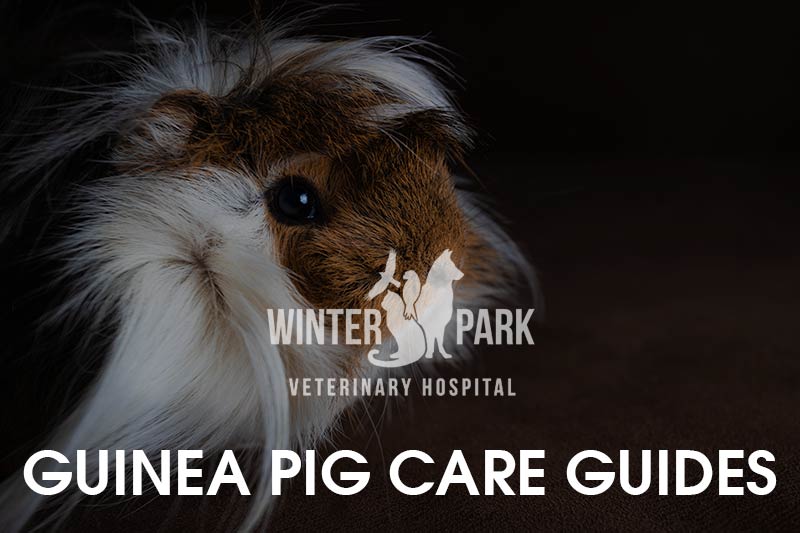Download Chameleon Care Guide – PDF
Species Names
There are over 150 known species of chameleons. The most common ones kept in captivity are:Chamealeo calyptratus (veiled chameleon), Furcifer pardalis (panther chameleon), and Chamealeo jacksonii (Jackson’s chameleon).
Housing
One of the most important features of a chameleon’s environment is a tree. Chameleons are arboreal, meaning they spend almost their entire lives in trees. Small potted ficus trees (Ficus benjamina) are ideal for chameleons, as they can be placed in mesh-screen enclosures. Other safe plants to use in the enclosure include schefflera, hibiscus, bougainvillea, ivy, tillandsia, and orchids. The total size of the enclosure is dependent on the size of the chameleon, but generally it should have a perimeter that is at least six times the chameleon’s total length, and a height that is at least twice the chameleon’s length. Chameleons are generally territorial, and should be housed individually. Newspaper or Astroturf are the best substrates to place under the potted tree. Never use pine or cedar shavings, sand, kitty litter, moss, or sawdust as a substrate, as these products can cause severe respiratory problems or intestinal obstruction if eaten.
Humidity
Chameleons require a high level of relative humidity, generally 70-80%. A typical air-conditioned home has extremely low humidity, so keeping chameleons inside the home requires providing moisture sources to raise the humidity. A hygrometer, a device used for measuring humidity, should be used. Humidity should be maintained through use of a greenhouse misting system or a drip system. Misting or spraying by hand is only effective if done on a very frequent basis (i.e. 3 to 4+ times daily). Most chameleons will not drink out of standing water dishes, but will drink drops of water off of their enclosure. Some chameleons will drink from rodent water bottles. Adequate ventilation should always be maintained. Never reduce ventilation to increase humidity.
- Species specific humidity levels:
- Jackson’s chameleon: 60-100%
- Panther chameleon: 60-80%
- Veiled chameleon: 40-60%
Heating
Chameleons are ectotherms (‘cold-blooded’), meaning they require an external source of heat to raise their metabolic levels. Recommended heat sources are heat lamps and ceramic heat emitters. Never use heat rocks or heating pads, as these can cause severe thermal burns. The heat source should be placed over one end of the enclosure, thereby creating a thermal gradient from the warm end nearest the heat source to the cool end farthest from the heat source. Thermometers should be placed on each end of the enclosure to monitor the temperature gradient. The ideal temperature of the basking site (the warmest part of the cage) depends on the species. Panther and veiled chameleons require a basking site of 90ºF. Jackson’s chameleons come from cooler environments, so the warm end should not exceed 84ºF. The cool end for most chameleons should not be lower than 72ºF. Heat sources can be turned off at night, so long as the temperature does not fall below 70ºF. A simple plug-in timer should be used to replicate normal daylight hours.
Lighting
Indoor enclosures require an artificial source of UV light. Placing the enclosure by a window is not sufficient, since glass will filter out most UV light. Use only bulbs designed specifically for reptiles that produce both UV-A and UV-B rays. Replace bulbs every 6 months as they begin to lose their efficacy after this time. Lights should be on a timer to be on for 12-14 hours of the day. If possible, chameleons should be allowed to get several hours of natural, unfiltered sunlight every week. A safe outdoor enclosure can facilitate this.
Feeding
Chameleons are primarily insectivorous. A varied diet of gut-loaded crickets, mealworms, waxworms, silkworms, and roaches should be offered. See the hand-out “Gut-Loading” for an explanation of this process. Larger specimens will even enjoy the occasional pinky mouse. Food items should generally be as long as the width of the chameleon’s head. Some species of chameleons (particularly veiled) require plant matter in the diet as well. Offer chopped romaine, mustard greens, grapes, kiwi, etc. Never offer spinach, brocolli, beet greens, or brussel sprouts, as these contain oxalic acid which can decrease blood calcium levels, resulting in severe metabolic diseases.
Supplements
Both over-supplementing and under-supplementing vitamins and minerals can be problematic in chameleons. A good balance of supplements is one part calcium supplement (such as ReptiCal™ or ground calcium carbonate (such as Tumsä tablets) or calcium gluconate tablets) to two parts reptile multivitamin supplement (such as Nekton-Rep™ or ReptiVite™).
- Supplementing schedule:
- Veiled and panther chameleons: lightly supplement one feeding daily
- Flap-neck and horned chameleons: three to four times weekly
- Tanzanian dwarf and Weidersheim’s chameleons: once weekly
Chameleons regularly exposed to sunlight require less Vitamin D3 and therefore should only be given a multivitamin supplement containing this nutrient once weekly. For gravid (egg-carrying) female chameleons, the supplement mix should be altered to two parts calcium supplement to two parts multivitamin supplement.
Reference
De Vosjoli, P. Essential Care of Chameleons. Irvine, CA: Advanced Vivarium Systems, Inc., 2004. http://www.avsbooks.com
De Vosjoli, P. and Ferguson, G. Care and Breeding of Chameleons. Irvine, CA: Advanced Vivarium Systems, Inc., 1995. http://www.avsbooks.com









